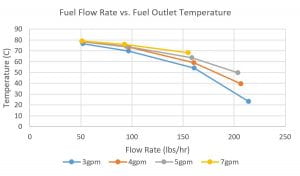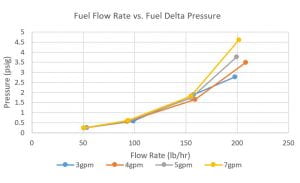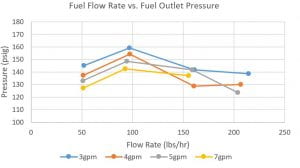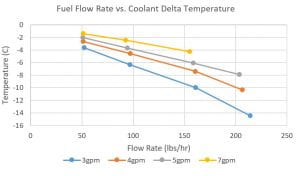Hydrodynamic and heat transfer characteristics of a double helically coiled tube confined in a cylindrical shell is experimentally studied using an instrumented test loop that represents a prototypical LNG fuel delivery system for natural gas-burning IC engines. The test loop comprises of a heat exchanger consisting of a double-helically coiled tube that carries liquid nitrogen (liquefied natural gas (LNG) in the real system), placed in a shell-confined secondary side through which a secondary coolant (a mixture of propylene glycol and water in the experiments, and engine oil in the prototype) flows. Experiments addressing liquid and gas (vapor) single phase flows, as well as boiling/two-phase flows, are performed. CFD simulations are carried out, and empirical correlations are developed for the frictional pressure loss as well as heat transfer.
Two sets of experiments are carried out: purely hydrodynamic, and heat transfer. In the hydrodynamic experiments the intention is to measure and correlate the friction factor in the helically coiled flow passage. In these experiments the working fluid is either nitrogen, or water. A constant flow rate is imposed through the coil, and once steady-state is achieved the total pressure drop in the coil is measured. In heat transfer experiments the main objective is to measure the coil average heat transfer coefficient, even though the pressure drop and as a result the average friction factor are also measured. In these experiments first a steady flow of gas or liquid is established through the coil. The secondary side heater is then turned on and a constant flow rate of the secondary flow is also imposed. The system is then allowed to reach steady state. The measured parameters include the coiled tube flow rate and inlet and outlet temperatures and pressures, as well as the secondary side flow rate and inlet and outlet temperatures. The experimental data will thus be analyzed by solving these equations and applying the best available flow boiling maps and two-phase pressure drop multiplier correlations, as well as utilizing the most appropriate void-quality correlations. For the numerical integration of these equations the available commercial software, in particular SINDA and Thermal Desktop will be used, and wherever possible and appropriate modifications will be made to their constitutive and closure relations (i.e., empirical correlations) to bring about agreement between the experimental data and model predictions. Some typical results for boiling is shown below
 |
 |
 |
 |
 |
 |